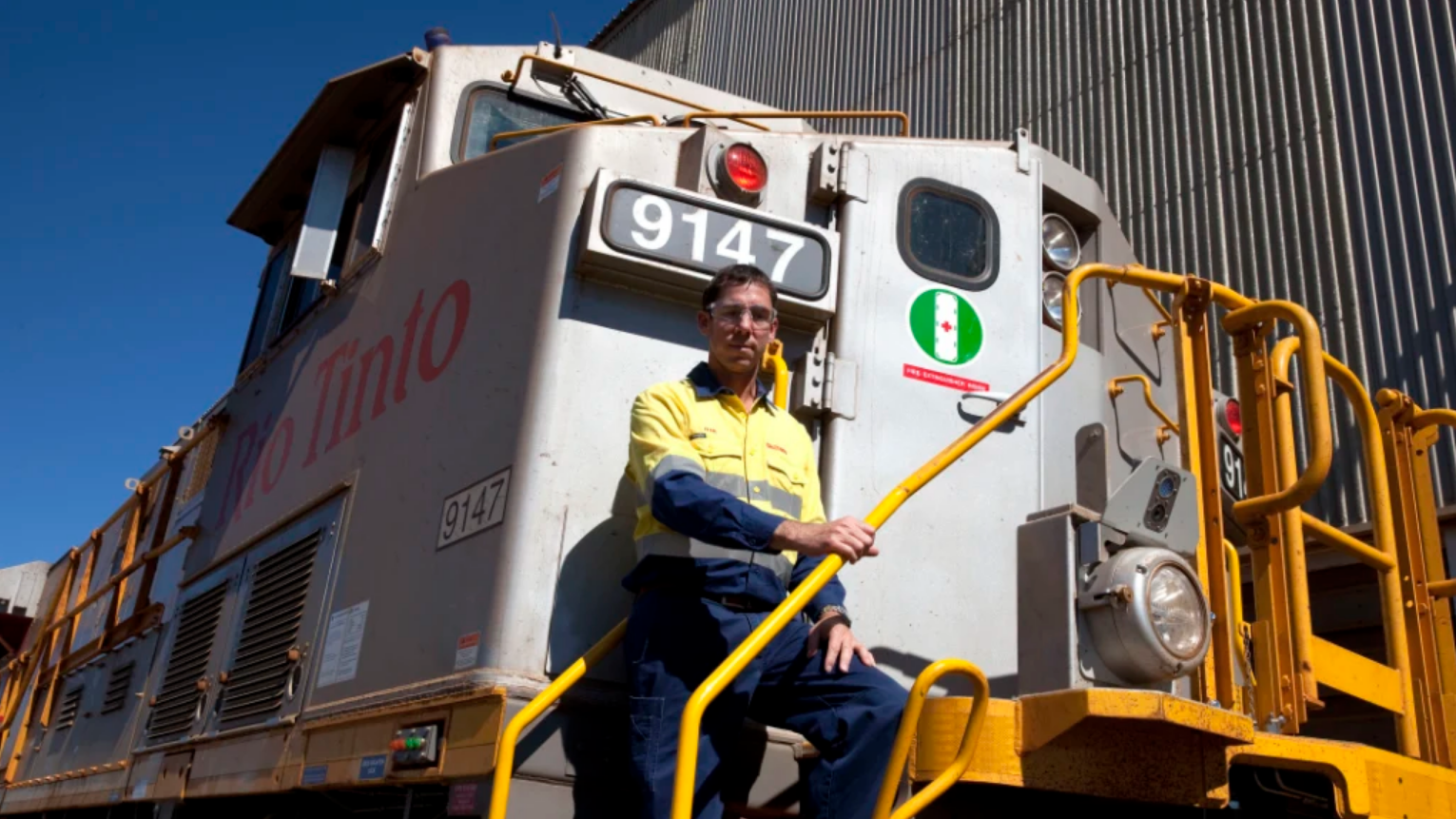Rio Tinto Launches ‘World’s Biggest Robot’

The mining sector’s robot love affair hit its crescendo on Friday on the Dampier Peninsula as iron ore giant Rio Tinto officially launched its Autohaul driverless train.
More than a decade of work and $940 million went into turning 200-odd locomotives into ‘the world’s biggest robots’.
From the outside the locomotives are imposing, but some were built nearly 25 years ago and look like they’re just a few levels of tech above needing hand-shovelled coal to get going.
Even the cabins give nothing away. They’re all still equipped with microwaves and fridges and plush-looking driver chairs that feature the grooves of drivers’ rumps.
But walk down a small set of stairs and open an unassuming cabinet and you’ll find a mess of wires, circuit boards and other complicated looking electronics that make up the Autohaul’s brain.
The company had to overcome unique regulatory hurdles and several delays due to the complexity of the software.
Now hundreds of trains trundle obediently through the Pilbara’s oxide-stained ranges and salt flats every day, carrying 1 million tonnes of Rio Tinto product from its 16 mines to port. At all times being closely monitored by a remote operations centre in Perth.
Rio Tinto iron ore managing director of rail, port and core services Ivan Vella said Autohaul reflected the pioneering spirit of the project team and cemented the Pilbara as the ‘Silicon Valley of autonomy’.
“This is another reflection of the commitment to technology and innovation here in the Pilbara and in WA,” he said at the official launch of the trains at the company’s 7 Mile rail operations centre near Karratha.
The safety of ore trains is at the forefront of the public’s mind since BHP’s catastrophic derailment last year, and as much as Rio Tinto wants to distance its new system from those comparisons, the industry will be closely watching Autohaul’s safety outcomes.
Autohaul has collision detectors, cameras and motion sensors splashed across the locomotive and because Rio Tinto’s 1700km rail network is private, the tracks and level crossings have been upgraded to work in tandem with the trains.
The company said it all makes for an extremely safe machine, but unfortunately the physics of stopping a fully loaded train mean stray kangaroos are no more likely to survive an encounter with the front of a locomotive, manned or not.
Mr Vella said he had been ‘pleasantly surprised’ at how well the Autohaul system was working.
“When you start something like this where technology is involved you always expect there will be some challenges and reliability issues you have to work through and the ramp up has gone much smoother and much quicker than we’d hoped,” he said.
“On a normal day about 95 per cent of our trains complete their journeys without any impact at all.”
Automated trucks have been operating at some of WA’s biggest mines for more than a decade and the Autohaul is the next step in the march toward taking as many humans away from risky mining operations as possible.
This path has drawn constant criticism from unions who say mining companies are placing profits over people in their ruthless pursuit of efficiency.
Rio Tinto’s longest round trip is to its Hope Downs 4 mine. It takes about 46 hours.
Autohaul means there’s no more need to swap drivers on the journey.
“The key initial benefit from Autohaul is we avoid those driver changes,” Mr Vella said.
“Collectively we save an hour on average in cycle time, that is the most significant part of the business case initially for Autohaul.”
Ironically the software used by Autohaul has been informed by Rio Tinto’s best train drivers, but Mr Vella is quick to point out the project has not meant any job losses.
The company still had drivers stationed throughout the network to respond to faults, move trains when they go through yards and drive them on non-Autohaul lines.
Mr Vella said the project was never about cutting jobs, but rather removing bottlenecks and increasing the network’s flexibility.
“It’s something really important to clarify this project was never about job losses and never about cost savings in labour,” he said.
“It was about the efficiency of our network and creating a foundation for how we can now operate it.
“We’re really starting to optimise the way we run our network.”
So was the money worth it? Mr Vella thinks so.
“It will be years to recover a $940 million investment but we’re still very confident in the investment we made,” he said.
Despite the perceived impact on jobs the project had the full support of the WA government, which was excited at the prestige it bestowed upon the state in the technology stakes.
WA mines and Petroleum Minister Bill Johnston said there were now more autonomous vehicles in WA than California, home of the real Silicon Valley.
“Autohaul has brought the rail freight industry in this country into the 21st century and is rightfully the subject of global interest,” he said.
“I’d also like to mention that the development of the world’s biggest robot is such a success because of the contribution from Western Australia’s skilled engineers and innovative workers.”
Source: Sydney Morning Herald, 15 June 2019
